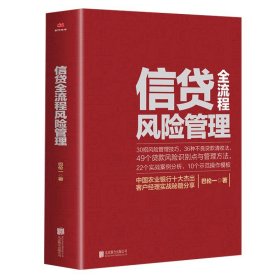
【正版现货闪电发货】英语词汇学教程 杨信彰 高等教育出版社
9787040252583
¥ 19.55 全新
仅1件
江苏南京
认证卖家担保交易快速发货售后保障
作者杨信彰
出版社高等教育出版社
ISBN9787040252583
出版时间2023-06
装帧平装
开本16开
货号44183615123
上书时间2024-08-29
- 最新上架
商品详情
- 品相描述:全新
- 商品描述
-
英语词汇学教程
作者: 杨信彰
出版社: 高等教育出版社
ISBN: 9787040252583
开本: 16开
出版日期:2009年7月
装帧: 平装
定价: 20.00
版次: 1
字数: 221千字
是否套装: 否
页码: 164
套装数量: 0
词汇是语言的一种基本材料。英语词汇学是我国高校英语专业学生的一门专业知识课。这是一门以当代语言学理论为指导,重在揭示现代英语词汇的普遍规律,分析英语词汇的各种现象以及英语词汇的演变和发展,深入研究英语词汇的专业课程。了解词汇学的基础理论和词汇的构词有助于帮助学习者了解英语的词汇特征,扩大英语词汇量,提高正确使用英语词汇的能力。
本书是普通高等教育“十一五”国家级规划教材。本书既叙述英语词汇的内部结构特征,又讨论英语词汇与社会文化、认知的关系,力图内容充实,充分体现英语词汇研究的成果。全书分为九章,可安排在一个学期完成。第一章先明确词汇学定义,然后讨论词汇的特征和词类。第二章介绍了词汇研究的几个基本概念,如词素、词位词义、词根、词干等,还探讨了一词多义和同音/形异义现象。第三章介绍了英语词汇的发展,涉及各个时期英语的词汇特征和英语的借词,还涉及了美国英语的一些词汇特点。第四章讨论了英语的构词法,涉及屈折变化、派生、复合、转换、混合、缩略、逆构词法等多种构词方式。第五章讨论同义、反义、上下义、部分一整体义、搭配、隐喻延伸等各种词义关系。第六章专门讨论习语、多词动词和成语。第七章叙述英语的各类词典以及词典的结构特征,介绍了几部具有代表性的英语词典。第八章从英语词汇使用的角度描述了词汇在方言、语域和语体中的表现,还涉及了禁忌语、委婉语、俚语、术语、语义转移等。第九章从认知的角度考察了心理词汇、隐喻、空间词汇等。
全书用英语写成,语言力求浅显易懂,以培养学生阅读英语专业书籍的能力。每一章均附上练习题。这些习题便于学生掌握所学的知识,并应用所学知识分析具体的词汇现象,培养学生解决问题和分析问题的能力。
前辅文
Chapter 1 Lexicology and Words
1.1 Introduction
1.2 What Is Lexicology?
1.2.1 Morphology and Semantics
1.2.2 Etymology and Lexicography
1.3 What Is a Word?
1.3.1 Difficulties in the Definition of the Word
1.3.2 Major Features of Words
1.4 Words in Linguistic Analysis
1.5 Word Classes
1.6 Lexical and Grammatical Words
1.7 Words and Semantic Fields
Exercises
Chapter 2 Some Basic Concepts and Word Meanings
2.1 Introduction
2.2 Morpheme, Lexeme and Morph
2.2.1 Morpheme
2.2.2 Lexeme
2.2.3 Morph
2.2.4 Types of Morphemes
2.3 Word Meanings
2.3.1 Denotation and Reference
2.3.2 Denotation and Sense
2.4 Seven Types of Meaning
2.4.1 Conceptual Meaning
2.4.2 Connotative Meaning
2.4.3 Social and Affective Meanings
2.4.4 Reflected and Collocative Meanings
2.4.5 Thematic Meaning
2.5 Root and Stem
2.6 Polysemy
2.7 Homonymy
Exercises
Chapter 3 The Origins of English Words
3.1 Introduction
3.2 The Development of English
3.3 The Historical Periods of English
3.3.1 Old English Period (450-1066)
3.3.2 The Middle English Period (1066-1500)
3.3.3 Early Modern English Period (1500-1800)
3.3.4 The Modern English Period (1800-present)
3.4 American English
3.5 Native English Vocabulary
3.6 Major Infl uences on English
3.6.1 The Scandinavian Influence
3.6.2 The Norman Conquest
3.6.3 The Latin Influence
3.7 Borrowings in English
3.7.1 Latin words in English
3.7.2 Greek and French Loanwords
3.7.3 German, Dutch and Italian Loanwords
3.7.4 Loanwords from the East
3.7.5 Loanwords from Other Sources
3.8 The Size of English Vocabulary
3.9 Creation of New English Words
3.9.1 Root Creation
3.9.2 Onomatopoeic words and Ejaculations
3.9.3 Word formation
Exercises
Chapter 4 Word Formation in English
4.1 Introduction
4.2 Infl ection and Derivation
4.2.1 Definition of Inflection
4.2.2 Functions of Inflection
4.2.3 Derivational Affix
4.2.4 Functions of Derivations
4.2.5 Types of Derivational Affix
4.3 Compounding
4.3.1 Definition of Compounding
4.3.2 Characteristics of Compounds
4.3.3 Common Patterns of Compounds
4.4 Other Word-formation Processes
4.4.1 Conversion
4.4.2 Blending
4.4.3 Shortenings
4.5 Backformation
4.6 Words from Proper Names and Metanalysis
4.6.1 Words from Proper Names
4.6.2 Metanalysis
Exercises
Chapter 5 Sense Relations
5.1 Introduction
5.2 Characteristics of Sense Relations
5.3 Synonymy
5.3.1 Two Types of Synonymy
5.3.2 Difference Among Synonyms
5.4 Antonymy
5.4.1 Gradable Antonyms
5.4.2 Complementary Antonyms
5.4.3 Converse Antonyms
5.5 Hyponymy
5.6 Meronymy
5.7 Collocation
5.7.1 Free and Fixed Combinations
5.7.2 Grammatical Collocations
5.7.3 Lexical Collocations
5.7.4 Other Features of Collocation
5.8 Metaphorical Extension
Exercises
Chapter 6 Idioms, Multiword Verbs and Proverbs
6.1 Introduction
6.2 Idioms
6.2.1 Classification of Idioms
6.2.2 Different Aspects of Idioms
6.3 Multiword Verbs
6.4 Proverbs
Exercises
Chapter 7 English Dictionaries
7.1 Introduction
7.2 Organization of the Entry
7.2.1 Headword
7.2.2 Pronunciation
7.2.3 Grammatical Information
7.2.4 Etymology
7.2.5 Definition
7.2.6 Examples
7.2.7 Related Forms and Usage Labels
7.2.8 Illustrations
7.2.9 Supplementary Matter
7.3 Corpora
7.4 Dictionary Shelf-Life
7.5 Types of Dictionaries
7.5.1 General and Specialized Dictionaries
7.5.2 Monolingual and Bilingual Dictionaries
7.5.3 Electronic and Print Dictionaries
7.5.4 Unabridged Dictionaries
7.5.5 Learners’ Dictionaries and Children’s Dictionaries
7.5.6 Thesaurus
7.6 A Review of Some Dictionaries
7.6.1 The Oxford English Dictionary
7.6.2 Webster’s Third New International Dictionary of the English Language
7.6.3 The Chambers Dictionary
7.6.4 Random House Webster’s College Dictionary
7.6.5 Oxford Advanced Learner’s Dictionary.
7.6.6 Longman Dictionary of Contemporary English
7.6.7 Collins COBUILD English Dictionary
7.6.8 Macmillan English Dictionary for Advanced Learners
7.6.9 A New English-Chinese Dictionary and The English-Chinese Dictionary
Exercises
Chapter 8 Words in Context
8.1 Introduction
8.2 Dialect
8.3 Register and Style
8.4 Taboo Words and Euphemisms
8.4.1 Taboo Words
8.4.2 Euphemisms
8.4.3 Classification of Euphemisms
8.4.4 The Use of Euphemisms
8.5 Slang
8.6 Jargon
8.7 Meaning Shifts
8.7.1 Broadening
8.7.2 Narrowing
8.7.3 Amelioration and Pejoration
Exercises
Chapter 9 English Words and Cognition
9.1 Introduction
9.2 The Mental Lexicon
9.3 Metaphor
9.3.1 Cognitive Interpretation of Metaphor
9.3.2 Cognitive Modeling of Metaphor
9.4 Spatial Terms and Spatial Relationships
9.4.1 The Flexibility of Spatial Terms
9.4.2 Cognitive Mappings of Spatial Terms
9.5 Prototype and Radial Categories
9.5.1 Radiality and the Meaning of the Suffix -able
9.5.2 Radiality in Attributes
Exercises
References
“十一五”国家规划教材
'
相关推荐
— 没有更多了 —









![【原版闪电发货】鸭病图鉴[精装] 中国农业科学技术出版社 鸭病毒性疾病鸭病书籍鸭病学养殖书籍鸭病防控技术科学养鸭书养殖类书籍](https://www0.kfzimg.com/sw/kfz-cos/kfzimg/4538094/51575b849663f65b_s.jpg)












以下为对购买帮助不大的评价